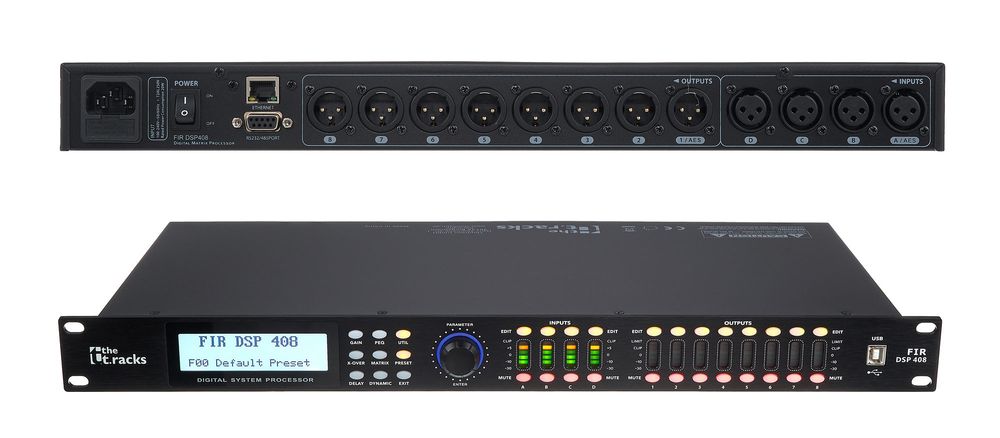7. Crossovers
In PA environments, crossovers are used to split an audio signal into different frequency ranges using crossover frequencies and send them to different loudspeaker boxes. Crossovers are, therefore, essential tools for managing speakers at live events and in venue installations like bars, clubs, and theaters. To ensure this works smoothly, the output signal must be adaptable to the specific situation. Thus, features like setting the crossover frequency, the ability for time delay, or phase inversion are vital.
Ideally, a digital crossover with a display should also offer real-time analysis of the audio signal. Moreover, it should have multiple inputs and outputs to make the most of signal distribution. To enable the crossover to be adapted to the local conditions, it should feature various equalizer types for adjusting crossover frequencies and signal processing, along with a noise gate. Automatic feedback suppression and a limiter are also things to look for. Some crossovers even generate artificial subharmonics for the bass range through an internal tone generator to make it sound fuller. With all these features, no wonder many digital crossovers are considered part of the multi-effects category.

The the t.racks FIR DSP 408 is a loudspeaker management solution with crossover functions.
For sound enthusiasts looking to get creative and use crossovers in unconventional ways, they can theoretically use them to chain multiple multi-effects units and/or different signal processors. Another creative approach is repurposing a standard multi-effects unit as a crossover. As long as a multi-effects unit offers two high-pass and low-pass filters simultaneously with different stereo panning and has two outputs, it can be used as a simple crossover for a mono channel.


